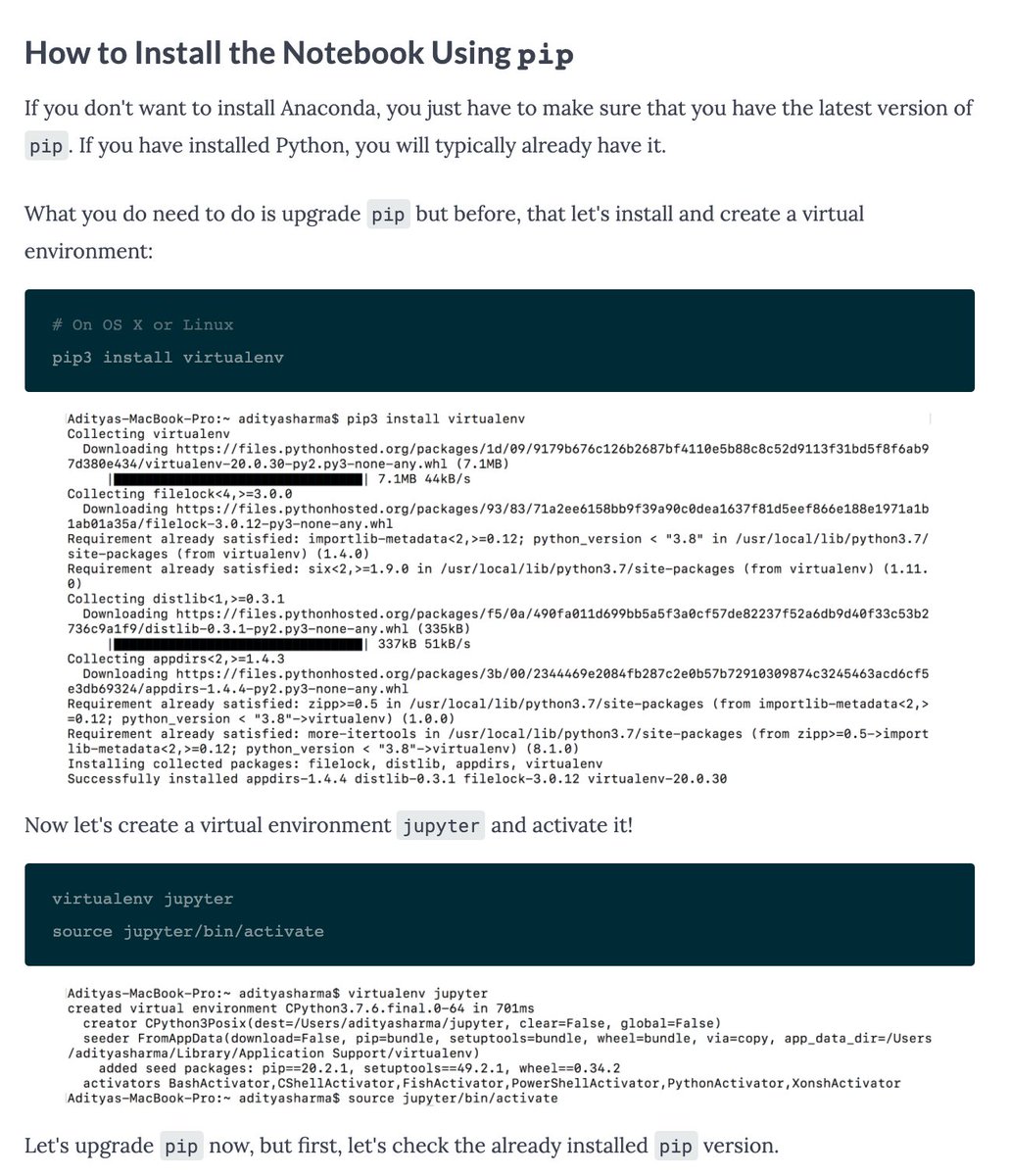
- Pip install jupyter notebook pip3 how to#
- Pip install jupyter notebook pip3 install#
- Pip install jupyter notebook pip3 free#
- Pip install jupyter notebook pip3 windows#
Pip install jupyter notebook pip3 install#
Openning a new notebook and running Python commandįirst, upgrade pip just to make it sure that your pip is up-to-date to ensure that it will install the Jupyter properly.

Pip install jupyter notebook pip3 how to#
This tutorial shows how to install Jupyter and run a web based notebook. But this is not provided as a part of defaul installation package (at least as of Python v3.62) and you need to install this mnually.
Pip install jupyter notebook pip3 free#
If you want to keep improving your Python skills and learn about new and exciting technologies such as Blockchain development, machine learning, and data science, check out the Finxter free email academy with cheat sheets, regular tutorials, and programming puzzles.Jupyter is a special tool to let you use Python on your web browser. See above for the different ways to install psutil in your environment. To fix the error, install the psutil library using “ pip install psutil” or “ pip3 install psutil” in your operating system’s shell or terminal first. ModuleNotFoundError: No module named 'psutil'īecause you haven’t installed the package, Python raises a ModuleNotFoundError: No module named 'psutil'. Say you try to import the psutil package into your Python script without installing it first: import psutil How to Resolve ModuleNotFoundError: No module named ‘psutil’? This automatically installs the psutil library when the cell is first executed. This works for the psutil library too: !pip install my_package To install any package in a Jupyter notebook, you can prefix the !pip install my_package statement with the exclamation mark "!". Make sure to select only “psutil” because there may be other packages that are not required but also contain the same term ( false positives): How to Install psutil in a Jupyter Notebook? Here’s the general package installation process as a short animated video-it works analogously for psutil if you type in “psutil” in the search field instead:

Second, if this leads to an error message, try this command to install psutil on your system: pip3 install psutil
Pip install jupyter notebook pip3 windows#
Here’s how to open the command line on a (German) Windows machine:įirst, try the following command to install psutil on your system: pip install psutil It is now installed on your Windows machine. In this case, try "pip3 install psutil" or “ python -m pip install psutil“.



 0 kommentar(er)
0 kommentar(er)
